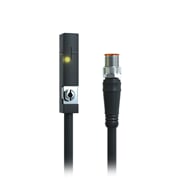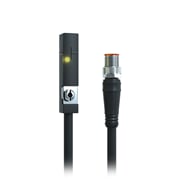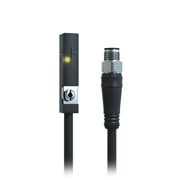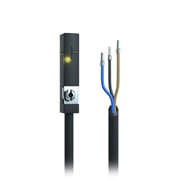Cylinder position sensors
Cylinder sensors are used to determine the piston position in pneumatic cylinders. They are mounted directly onto the cylinder. The ring magnet attached to the piston is detected through the housing wall of non-magnetisable material (e.g. aluminium, brass or stainless steel). Read more here
Cylinder position sensors
All items of the category Cylinder position sensors:
Cylinder sensors
Cylinder sensors serve to determine the piston position in pneumatic cylinders. They are mounted directly onto the cylinder. They register the ring magnets attached to the piston through the housing wall made of non-magnetic material (e.g. aluminium, brass or stainless steel). autosen supplies a standard solution for various cylinder types and manufacturers. Cylinder sensor variants with connecting cables and M8 or M12 cable connectors and a wide range of adapter accessories are available.
Advantages of cylinder sensors
Cylinder sensors can be installed quickly by a self-clamping fixture in the T-slot and easily adjusted, and they are available for the most common T-slots. Even without a slot, you can mount cylinder sensors onto the cylinder with the aid of our adapter accessories. Thanks to the contactless detection and the technology without any moving parts, cylinder sensors are particularly robust, operate wear-free and have long service lives. autosen’s cylinder sensors employ state-of-the-art GMR technology.


The advantages of cylinder sensors at a glance:
- Easy installation and adjustment
- Suitable for the most common T-slots
- Can also be mounted and used without slot
- Contactless and wear-free operation
- Long operating periods
- State-of-the-art GMR technology
Areas of application for cylinder sensors
Cylinder sensors are used on pneumatic and hydraulic cylinders, for instance for end position recognition of deployable supports or stroke limitation in cylinders. In combination with a float with a magnet attached, they can also be used for level monitoring.
How cylinder sensors function
Our cylinder sensors employ state-of-the-art GMR technology: A GMR element consists of resistances with several extremely thin ferromagnetic and non-magnetic layers. If two GMR resistances are used in a standard Wheatstone bridge, a proportional signal is generated in the presence of a magnetic field. If the signal exceeds a pre-set threshold value, an output signal is switched via a comparator.










